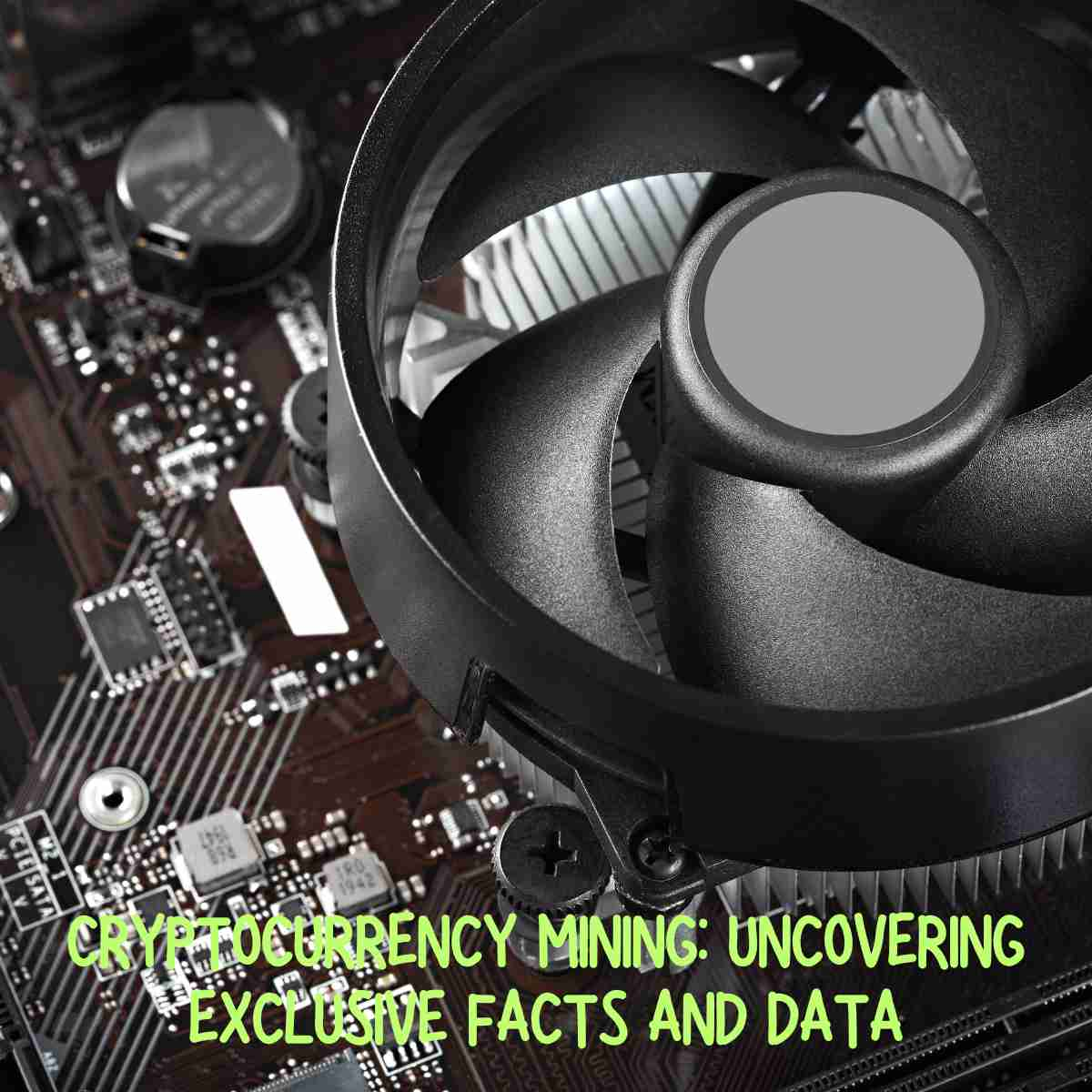We all are quite aware of what cryptocurrency is! At least, a vague idea of digital money is something that we know about bitcoins and crypto. But do you know what we imply by Cryptocurrency mining? Well, that can be something relatively new to us! If you are coming across the term for the very first time then of course, here is what you need to know! Read on to find out more about crypto mining with us. In simple words, it is a way of verification of cryptocurrency transactions, but do you know how it works?

What do you mean by cryptocurrency mining
Bitcoin mining is the popular method of verifying a transaction in the form of digital money. This is done via the blockchain and as a result, a new bitcoin is generated. The concept is very similar to how central banks print new fiat currency.
A general concept of bitcoins and cryptocurrency
Before you take a glimpse into how bitcoins and mining work, let us have a look at how blockchain and cryptocurrency are interlinked with one another.
Blockchain is considered a general platform where all the cryptocurrency transactions are recorded in a series of blocks arranged into a chain structure. This is also defined as a digital data structure where all the transactions are done digitally and later distributed over a network of computers. Hence we can also define it as a system of documenting the data digitally and then distributing it through a ledger.
It can be said for sure that Bitcoins are composed of blockchains of data. Each of these blocks is then verified by the miners checking their authenticity. Following the verification, there can be no changes that can be included due to the data already being placed on the blockchains.
Distributed ledger technology is what is widely used in digital currency procedures. Since no record can be altered, this system is completely reliable for the users. Transparency of transactions is the biggest pro of this system. This is to be noted that the latest cryptographic algorithm techniques of SHA-256 are used by the ledgers, where data is converted into unique strings of characters. Let’s gather more detailed information about mining associated with cryptocurrency! Shall we?
Definition of Bitcoin mining_ Everything that you need to know
An advanced computation technique involving the latest and most complex technologies to verify and authenticate transactions over Bitcoin platforms. But why is it particularly called mining or are the people involved in verification called miners? Well, it is said so, because, like any other kind of natural resource, they are limited in quantity. You must know that the maximum amount of bitcoins that can be produced is 21 million.
Similar to any kind of mining, you need to invest some energy to mine the resources! The Bitcoins are produced in the process. Here you are supposed to invest in the form of electrical energy. Well, the players compete against each other to resolve the hash puzzles that are cryptographically encoded and verified. And consequently stored in the form of block transactions.
What is the protocol followed in generating Bitcoins?
The mining process can be categorized into a few parts! Let’s understand the components and how each of them works. Before the process of morning begins, they need to rig the parts. The complex puzzle needs to be solved through graphics processing units (GPUs) with advanced graphics cards. Other options include field programmable gate arrays (FPGAs), or application-specific integrated circuits (ASICs). This process sums up the set-up of the hardware resources.
Apart from the hardware, specific software is needed as well. These include CG miner, XMR miner, and multiminer. Most of this software can be easily downloaded for free. Operating on a Windows or Mac computer, the hardware needs to be linked to the software to initiate the process of mining. And with that, you can conclude the software setup and generation of the e-wallet.
Next, a miner can choose whether to set up a mining pool or whether solo mining can be initiated. Since it becomes hard to mine alone, mining collectively is the best thing to do. Groups of miners formed together to deal with collective data and the generation of Bitcoins. In the end, each miner is paid for their share of the work. When working in a group, efficient mining can be done since all the problems can be addressed collectively.
Small miners can get the scope to participate in big mining. Consequently, the miner needs to solve the complex hash puzzle in hand, validate the transaction, and create the blockchains. Each of the blocks is connected through link lists. Memory addresses of previous and upcoming blocks are recorded here for further reference in the future.
How much incentives are earned by the cryptocurrency miners
Now this is a very valid question to bother yourself with! Why would a miner validate a transaction without receiving any incentive? Especially when a huge amount of infrastructure and energy cost is required, incentives must be involved as well. This is to be noted that validation of a Bitcoin transaction involves solving complex mathematical problems. These are associated with heavy incentives along with the scope to earn free Bitcoins and rewards in the form of transaction fees. According to the current budget, 6.25 Bitcoins for every block is provided for the same.
Initially, in 2009, every block miner used to receive 50 bitcoins which halved and further halved in 2016 and 2020. This process is known as Bitcoin halving. After every 210,000 blocks are completed, the value is reduced by half of the original, which more or less takes place every four years.
The reduction of inflammation and circulation rate to maintain a stable value is the primary motive behind introducing this system.
What are the different types of Bitcoin mining
If you weren’t already aware, Bitcoin mining can be done in several ways. The rewards and the morning powers can vary from one kind to another. We have listed the common ones for you.
1. GPU mining-
With the gradual popularization and acceptance of Bitcoins, the miners came up with a new system called the GPU system, also known as the Graphic Processing Unit. These interfaces are mainly used for gaming and provide better hash rates than CPU as well as modern video editing. GPU mining software was first launched in 2010.
2. CPU mining-
During the launch of Bitcoins and the introduction of mining in 2009, the process of mining was initiated through CPU. This as we know is also called the brain of the computer. This requires all circuitry to process input and output results. Mines were operated by the CPU in the early times of Bitcoin’s invention.
3. ASIC Mining-
Also known as the application-specific integrated circuit, this is a kind of hardware designed especially for the mining of cryptocurrency exclusively. Powerful than the basic GPU miners, this was launched around 2012. However, due to their specialized function, these are very expensive and the price range may vary between $2,000 to $15,000. With other complications like electricity costs along with network difficulties involved, you will surely find this one to be the most expensive thing ever.
4. Cloud mining-
This one has come up to be the most latest type of mining of Bitcoins. A contract can be bought from the cloud mining providers and the sunk cost or maintenance charges can be avoided through this system.
5. FPGA-
Other mining techniques include field-programmable gate arrays. In terms of speed and cost, this is the most reliable method used for mining. If you do not wish to invest much into your mining hardware then FPGA is one of the most ideal things to opt for.
Can it be profitable to engage in Bitcoin mining
Bitcoin mining looks profitable at the front but it may not be so! Or, is it? However, you must know that the stronger the Bitcoin network, the harder it will be to solve the problem of the mathematical algorithm that accompanies the same. When several mining networks are connected such that the process runs smoothly. If miners compete against each other then it will get harder to solve the problem. This kind of function is needed for a steady workflow.
What are the different factors involved in Bitcoin mining
It can be a profitable job to calculate and verify bitcoins but it may not be as easy as it sounds. Some of the commonly impacted ones include Electricity and power consumption charges, Mining pool fees, Bitcoin’s market price, Block rewards, Mining difficulty, Hash rare, and so on.
So should you engage in Bitcoin mining
This is rather a valid and thoughtful question to ask yourself. Being a profitable avenue of investment, this is something that most individuals opt for! But there is one thing that you must know. Although it can be profitable and earn you more in less time, the process may not be so easy! And it is 100% true! Solving difficult mathematical equations can be challenging especially if you are a newcomer in the cryptocurrency business world.
You need to have the proper technical skills as well as adequate ingredients to indulge in Bitcoin and other cryptocurrency mining. You also need to make the initial investment in high-tech machinery and tools. They are not only costly too but using this will also imply you shall need high power and smooth running electric supply. These are some of the factors that you should weigh before you jump in.




